Horses have long been an essential part of human history, serving as companions, work animals, and symbols of power and freedom. With over 400 recognized breeds, horses come in a wide range of shapes and sizes, each with unique characteristics suited to specific tasks. Whether you're interested in learning about draft horses, ponies, or something in between, this article will guide you through the different types of horses, their classifications, and how they compare in size—from the largest to the smallest.
Horses are typically classified into three main categories based on their build, temperament, and purpose. These categories are:
Draft Horses
Known for their large size and strength, draft horses were originally bred to perform heavy labor, such as plowing fields and pulling heavy carts. These horses are muscular, with thick legs and broad bodies, making them ideal for work that requires power and endurance.
Light Horses
Light horses are more agile and versatile compared to draft horses. They are commonly used for riding, racing, and light work. These horses are generally quicker and more athletic, with a build that combines strength and speed.
Ponies
Ponies are smaller horses, typically under 14.2 hands (58 inches or 147 cm) at the withers. Though smaller, ponies are known for their sturdy build, strength, and often lively temperaments. They are commonly used for riding by children or for light work and driving.
Some of the largest horse breeds in the world belong to the draft horse category. These gentle giants are known for their imposing size, strength, and calm nature.
Height: 16 to 18 hands (64 to 72 inches or 163 to 183 cm)
Weight: 1,800 to 2,400 lbs (820 to 1,100 kg)
Overview: The Shire horse is the largest horse breed in the world, often standing over 18 hands tall. This British breed was historically used for pulling heavy loads in agriculture and industry. They are known for their calm demeanor and exceptional strength.
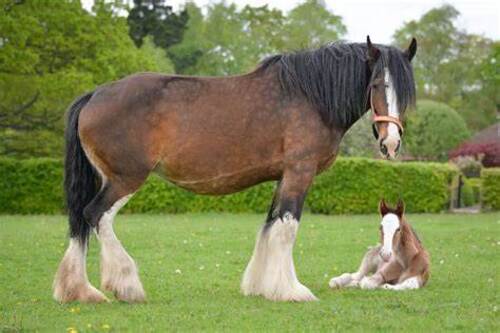
Height: 16 to 18 hands (64 to 72 inches or 163 to 183 cm)
Weight: 1,600 to 2,200 lbs (725 to 1,000 kg)
Overview: The Clydesdale, famous for being the face of Budweiser’s iconic advertising campaigns, is a large and powerful draft horse breed from Scotland. Their flowing white feathering on the lower legs and impressive height make them stand out.
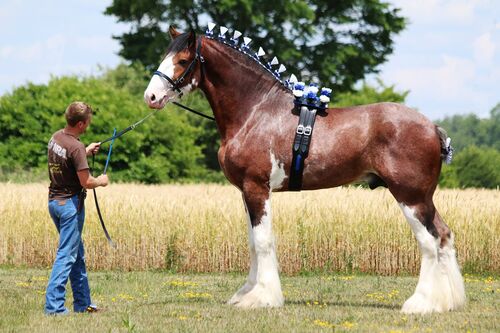
Height: 15 to 19 hands (60 to 76 inches or 152 to 193 cm)
Weight: 1,800 to 2,600 lbs (820 to 1,180 kg)
Overview: The Percheron is a French draft horse breed known for its versatility and strength. These horses are often used for farming, riding, and even in parades due to their intelligence and work ethic.
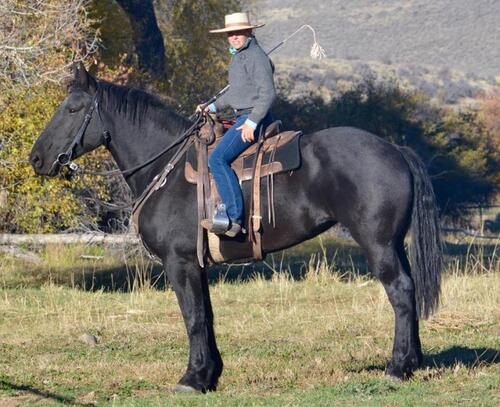
Height: 16 to 18 hands (64 to 72 inches or 163 to 183 cm)
Weight: 1,800 to 2,200 lbs (820 to 1,000 kg)
Overview: The Belgian Draft horse is another massive draft breed, known for its compact and muscular build. Originally bred for farm work, they are now used for logging and pulling competitions.
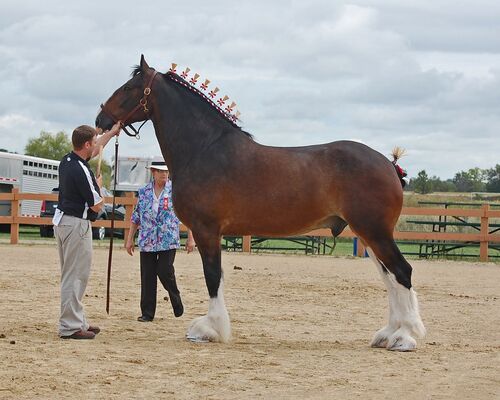
The following are light horse breeds, known for their agility, speed, and versatility. These horses are typically used for riding, racing, and light work.
Height: 15 to 17 hands (60 to 68 inches or 152 to 173 cm)
Weight: 900 to 1,200 lbs (410 to 540 kg)
Overview: The Thoroughbred is a renowned breed in the racing world. Known for their speed, stamina, and agility, these horses are bred for competitive horse racing and are often seen in major events like the Kentucky Derby.
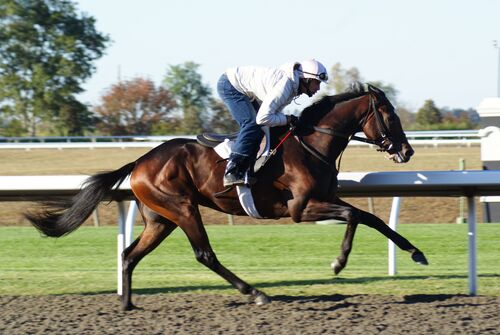
Height: 14 to 16 hands (56 to 64 inches or 142 to 163 cm)
Weight: 950 to 1,200 lbs (430 to 540 kg)
Overview: The American Quarter Horse is one of the most popular horse breeds in the world. Famous for their ability to sprint short distances quickly, they are widely used in rodeo events, western riding, and ranch work.
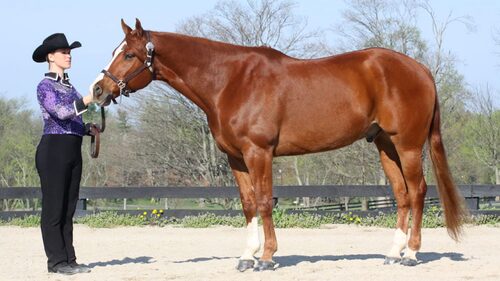
Height: 14 to 16 hands (56 to 64 inches or 142 to 163 cm)
Weight: 800 to 1,000 lbs (360 to 450 kg)
Overview: The Arabian is one of the oldest horse breeds, known for its endurance, grace, and spirited personality. Arabians have distinctive physical features such as a dished face, high tail carriage, and refined build, making them one of the most easily recognizable horse breeds.
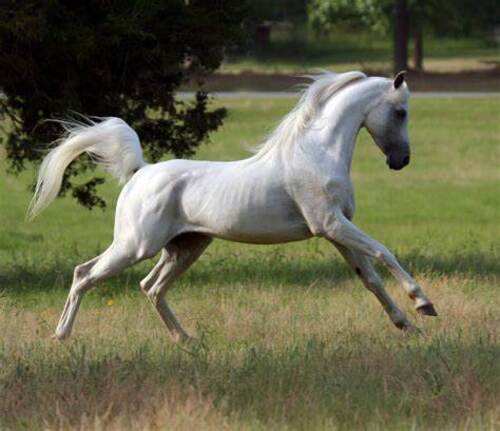
Ponies are much smaller in size compared to light and draft horses but are incredibly hardy and strong for their size.
Height: 7 to 11 hands (28 to 44 inches or 71 to 112 cm)
Weight: 400 to 450 lbs (180 to 200 kg)
Overview: The Shetland Pony is one of the smallest horse breeds but is known for its strength and robust build. Despite their size, Shetlands are often used for driving and as mounts for small children.
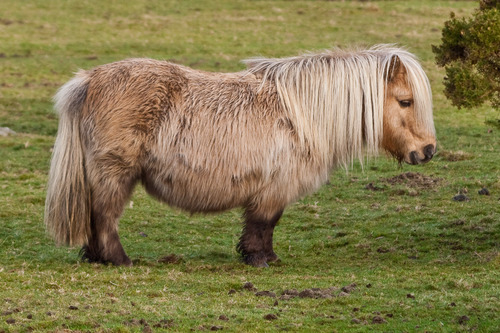
Height: 13 to 14 hands (52 to 56 inches or 132 to 142 cm)
Weight: 800 to 1,000 lbs (360 to 450 kg)
Overview: The Fell Pony is a versatile breed native to England. They are known for their sure-footedness and strength, often used for light draft work and riding in hilly or rugged terrain.
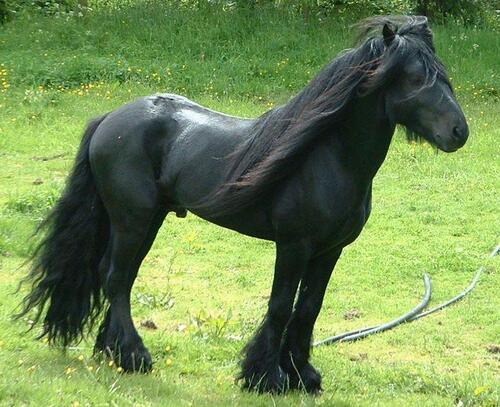
Height: Under 9 hands (36 inches or 91 cm)
Weight: 150 to 350 lbs (68 to 160 kg)
Overview: Miniature Horses are the smallest breed in the equine world, bred primarily for companionship and show. Despite their size, they are proportioned like full-sized horses and often compete in miniature horse shows.
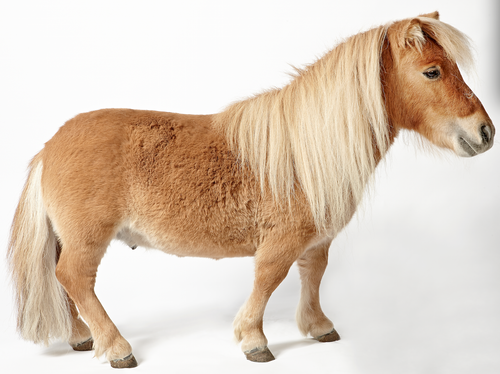
Here’s a quick reference chart to summarize the different horse breeds in order of size:
| Horse Breed | Height | Weight |
|---|---|---|
| Shire Horse | 16 to 18 hands (64 to 72 inches) | 1,800 to 2,400 lbs |
| Clydesdale | 16 to 18 hands (64 to 72 inches) | 1,600 to 2,200 lbs |
| Percheron | 15 to 19 hands (60 to 76 inches) | 1,800 to 2,600 lbs |
| Belgian Draft | 16 to 18 hands (64 to 72 inches) | 1,800 to 2,200 lbs |
| Thoroughbred | 15 to 17 hands (60 to 68 inches) | 900 to 1,200 lbs |
| Quarter Horse | 14 to 16 hands (56 to 64 inches) | 950 to 1,200 lbs |
| Arabian Horse | 14 to 16 hands (56 to 64 inches) | 800 to 1,000 lbs |
| Fell Pony | 13 to 14 hands (52 to 56 inches) | 800 to 1,000 lbs |
| Shetland Pony | 7 to 11 hands (28 to 44 inches) | 400 to 450 lbs |
| Miniature Horse | Under 9 hands (36 inches or below) | 150 to 350 lbs |
Horses come in a wide variety of shapes and sizes, from the towering Shire to the tiny Miniature Horse. Whether you're looking for a large and powerful draft horse, a versatile and athletic riding horse, or a small and sturdy pony, there is a breed perfectly suited to your needs. Understanding the differences in size, classification, and purpose will help you choose the right horse for your lifestyle, whether for work, sport, or companionship.
animal tags: Horses
We created this article in conjunction with AI technology, then made sure it was fact-checked and edited by a Animals Top editor.